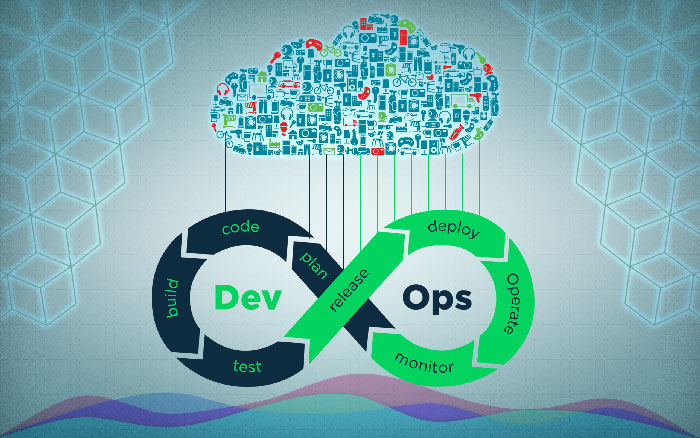In the fast-paced realm of software development, embracing DevOps has become the key to success, enabling organizations to deliver high-quality products at unprecedented speeds. However, many enterprises find themselves grappling with a formidable challenge: legacy environments. These aging systems, once the bedrock of their operations, now pose significant hurdles in the quest for modernization.
In this article, we embark on a transformative journey where we shed light on the trials and tribulations faced by organizations operating in legacy landscapes. From outdated infrastructure to fragmented teams and limited scalability, these obstacles can seem insurmountable.
But fear not! We also unveil a roadmap to overcome these challenges, offering practical approaches to modernize your DevOps practices. By adopting the right strategies, you can breathe new life into your legacy environments, transforming them into powerful catalysts for innovation and growth.
So, fasten your seatbelts and get ready to uncover the secrets of successful DevOps modernization. Together, we’ll navigate the twists and turns, unraveling the complexities, and emerge triumphant in the realm of modern software development. Let’s embark on this thrilling adventure and unlock the full potential of DevOps in legacy environments.
Understanding Legacy Environments: Navigating the Landscape of the Past
Legacy environments, like the fading remnants of a bygone era, present unique challenges in the realm of software development. In this section, we delve into the depths of legacy environments, shedding light on their intricacies and uncovering the hurdles they impose.
Defining the Legacy
Imagine stepping into a time capsule, transported to a world where technology has evolved by leaps and bounds. Legacy environments represent the remnants of outdated systems, often characterized by legacy code, aging hardware, and obsolete infrastructure.
Common Characteristics
Legacy systems bear the marks of their time. They may rely on proprietary technologies, lack documentation, or possess tightly coupled architectures.
These characteristics not only impede development and collaboration but also introduce a higher risk of failure and downtime. Unraveling these complexities requires a deep understanding of the system’s intricacies and dependencies.
Challenges Faced
Implementing DevOps in legacy environments is no small feat. Outdated infrastructure and technology hinder the adoption of modern tools and practices. Lack of automation and integration amplifies manual effort and slows down the development lifecycle.
Siloed development and operations teams struggle to align their goals and work harmoniously. Limited scalability and flexibility impede the organization’s ability to adapt to changing market demands.
Bridging the Gap
Overcoming the challenges of legacy environments requires a strategic approach. It involves assessing the current state of the systems, identifying bottlenecks and pain points, and building a modernization roadmap.
Gradual improvements can be made by introducing version control, automated testing, containerization, and adopting continuous integration and deployment (CI/CD) practices. Cultural transformation is also vital, breaking down silos and fostering collaboration among teams.
Benefits of DevOps in Legacy Environments: Unleashing the Power of Transformation
Amidst the challenges and complexities that legacy environments pose, there lies a silver lining – the transformative power of DevOps. In this section, we delve into the remarkable benefits that DevOps brings to the table when applied to legacy landscapes.
Improved Collaboration and Communication
Legacy environments often suffer from siloed development and operations teams, inhibiting effective communication and collaboration. DevOps breaks down these barriers, fostering a culture of shared responsibility and collaboration.
Through cross-functional teams and shared goals, individuals work together seamlessly, fostering a culture of innovation and collective ownership.
Faster Time to Market
In today’s competitive landscape, speed is paramount. DevOps practices enable organizations to streamline their development and deployment processes, reducing time to market significantly. By embracing automation, continuous integration, and continuous deployment, organizations can iterate rapidly, delivering value to customers at an unprecedented pace.
Enhanced Software Quality and Stability
Legacy systems are notorious for their fragility and stability concerns. DevOps addresses these issues head-on, promoting robust testing practices, automated quality assurance, and continuous monitoring.
By incorporating these practices into the development lifecycle, organizations can improve software quality, detect and resolve issues early, and ensure a more stable and reliable product.
Increased Efficiency and Productivity
Legacy environments often suffer from manual, time-consuming processes that hamper productivity. DevOps brings efficiency to the forefront by automating repetitive tasks, enabling developers and operators to focus on high-value activities.
Through streamlined workflows, organizations can optimize resource utilization, reduce errors, and empower teams to deliver more in less time.
Enhanced Customer Satisfaction
DevOps is ultimately driven by the desire to deliver value to customers. By embracing DevOps in legacy environments, organizations can respond swiftly to customer feedback, incorporate new features and improvements seamlessly, and deliver an exceptional user experience.
This focus on customer satisfaction fosters loyalty, improves brand reputation, and positions organizations as leaders in their respective industries.
Approaches for Modernizing DevOps in Legacy Environments: Paving the Path to Transformation
The road to modernizing DevOps in legacy environments may appear daunting, but fear not, for it is a path well-trodden by pioneers of software development.
In this section, we unveil a comprehensive set of approaches that will guide you towards successful modernization.
Step 1: Assessing the Current State
To embark on any transformational journey, it is crucial to gain a deep understanding of your legacy environment’s intricacies. Conduct a thorough system analysis, identify bottlenecks, and pain points. This assessment will serve as the foundation for devising an effective modernization roadmap.
Step 2: Building a Modernization Roadmap
Armed with insights from the assessment, it’s time to chart a course towards modernization. Prioritize modernization efforts based on business value and feasibility. Set realistic goals, define milestones, and establish success criteria to measure progress effectively.
Step 3: Implementing Gradual Improvements
Modernization does not happen overnight; it is an iterative process. Start by introducing version control and automated testing to establish a solid foundation. Embrace containerization and adopt a microservices architecture to enhance scalability and flexibility.
Embrace continuous integration and deployment (CI/CD) practices to accelerate delivery. Leverage infrastructure as code (IaC) and configuration management to ensure consistency and reproducibility. Establish robust monitoring and feedback loops to continuously improve the system.
Step 4: Encouraging Cultural Transformation
DevOps is as much about people as it is about technology. Break down silos and foster collaboration by promoting cross-functional teams. Embrace Agile methodologies to drive iterative and collaborative development. Create a culture of learning and experimentation, where individuals are encouraged to explore new ideas and embrace continuous improvement.
Step 5: Addressing Challenges Head-On
Modernizing DevOps in legacy environments inevitably comes with its share of challenges. Manage resistance to change by communicating the benefits and involving stakeholders throughout the process.
Address technical debt and codebase complexity by prioritizing refactoring and modernization efforts. Ensure organizational buy-in and support by highlighting the value of modernization and aligning it with business objectives. Address resource constraints and skill gaps by investing in training and upskilling programs.
Overcoming Challenges in Modernizing DevOps: Triumphing on the Path of Transformation
Like conquering a formidable mountain, organizations must equip themselves with the right tools and strategies to overcome these challenges and reach new heights of success.
In this section, we delve into the top challenges in DevOps implementation faced during the modernization process and provide insights on how to surmount them, empowering you to navigate the path of transformation with confidence and resilience.
Managing Resistance to Change
Change can be met with resistance, especially when it involves uprooting long-established practices. To overcome this challenge, communicate the vision and benefits of modernization to all stakeholders. Engage employees at all levels, provide training and support, and create a sense of shared ownership in the transformation process.
Dealing with Technical Debt and Codebase Complexity
Legacy environments often accumulate technical debt, outdated code, and complex dependencies. Addressing this challenge requires a strategic approach. Prioritize refactoring efforts, break down monolithic codebases into modular components, and invest in code quality and architecture improvement.
Ensuring Organizational Buy-in and Support
Modernizing DevOps in legacy environments requires the support and buy-in from key decision-makers and stakeholders. To secure their commitment, clearly articulate the value proposition of modernization.
Align the goals of the transformation with the organization’s strategic objectives, showcasing how it can drive business growth, innovation, and competitive advantage.
Addressing Resource Constraints and Skill Gaps
Modernization efforts may face resource constraints and skill gaps within the organization. Address this challenge by investing in training and upskilling programs to equip teams with the necessary knowledge and expertise. Leverage external expertise through partnerships or hiring consultants to bridge the gaps and augment internal capabilities.
Nurturing a Culture of Continuous Improvement
Cultural transformation is a critical aspect of successful DevOps modernization. Foster a culture of continuous improvement by encouraging experimentation, learning, and knowledge sharing. Celebrate successes, embrace failures as learning opportunities, and provide an environment that encourages innovation and collaboration across teams.
Conclusion
In the face of the challenges presented by legacy environments, the power of DevOps shines through as a beacon of transformation. The journey to modernize DevOps in legacy landscapes is not an easy one, but the rewards are immense.
By understanding the intricacies of legacy systems, embracing the benefits of DevOps, and implementing the right strategies through DevOps consulting services, organizations can unlock their true potential.
Through collaboration, accelerated delivery, enhanced software quality, and customer satisfaction, DevOps paves the way for a future where legacy environments become a springboard for innovation.


